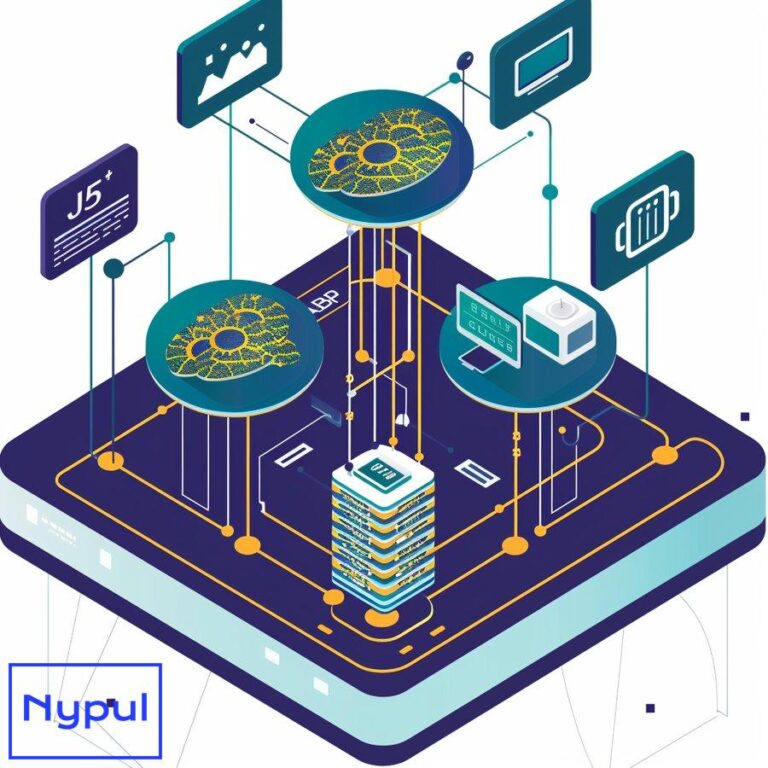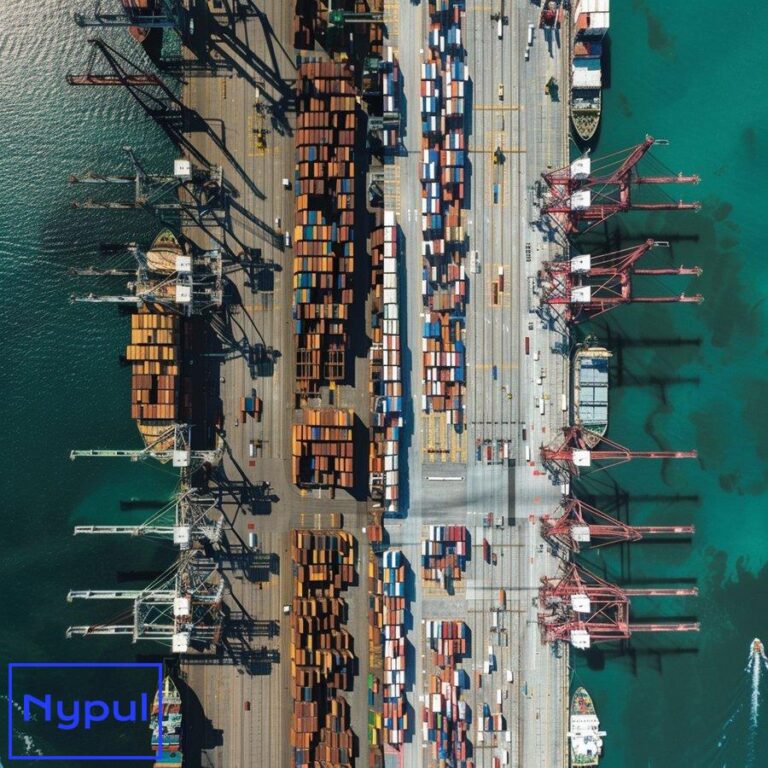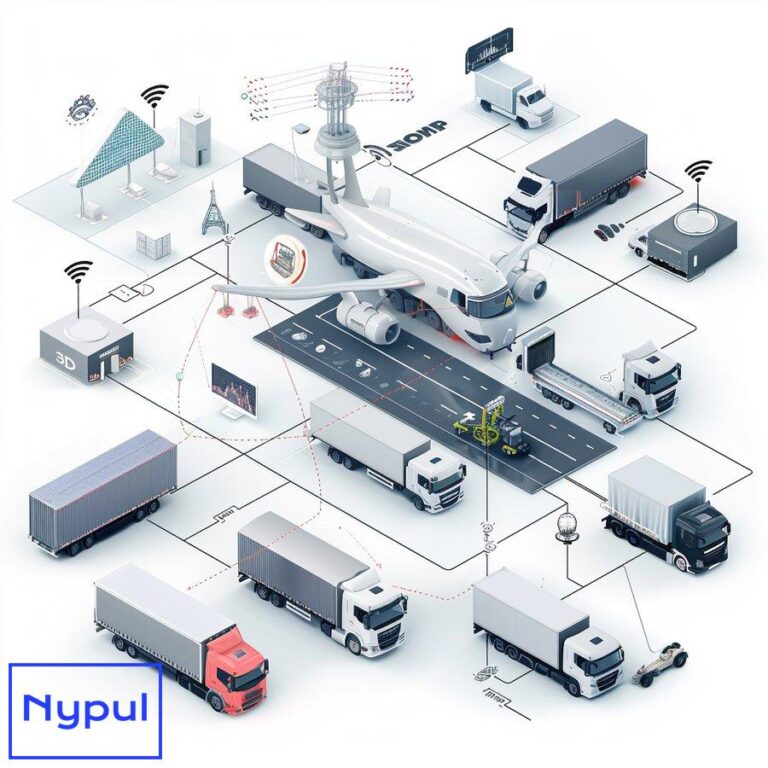How Does TMS Work in Transportation
What is a Transportation Management System (TMS)?
A Transportation Management System (TMS) is a specialized software solution designed to optimize and manage the movement of goods across various modes of transportation. This powerful tool serves as the central nervous system for logistics operations, coordinating and streamlining the complex processes involved in shipping and receiving products.
At its core, a TMS is engineered to enhance efficiency, reduce costs, and improve visibility throughout the supply chain. It accomplishes these objectives by automating many of the manual tasks associated with transportation planning, execution, and analysis. From route optimization to carrier selection, a TMS provides a comprehensive suite of features that empower businesses to make data-driven decisions and respond swiftly to changing market conditions.
![]()
The concept of a TMS has evolved significantly since its inception. Early systems were primarily focused on basic freight management and dispatch functions. However, modern TMS platforms have expanded to encompass a wide range of capabilities, including:
Real-time tracking: TMS solutions offer real-time visibility into shipment status, allowing companies to monitor their goods as they move through the supply chain.
Carrier management: These systems maintain a database of carriers, their rates, and performance metrics, enabling businesses to select the most suitable transportation partners.
Route optimization: Advanced algorithms within TMS platforms calculate the most efficient routes, considering factors such as distance, traffic patterns, and delivery windows.
Freight audit and payment: TMS automates the process of verifying and paying freight invoices, reducing errors and streamlining financial operations.
Analytics and reporting: Comprehensive reporting tools provide insights into transportation performance, costs, and trends, facilitating continuous improvement.
Compliance management: TMS helps ensure adherence to regulatory requirements and industry standards across different regions and modes of transportation.
The versatility of TMS solutions makes them valuable across various industries, from manufacturing and retail to healthcare and agriculture. For instance, a large retailer might use a TMS to coordinate shipments from multiple suppliers to distribution centers and stores, while a pharmaceutical company could leverage the system to ensure temperature-sensitive medications are transported under optimal conditions.
One of the key strengths of a TMS is its ability to adapt to the specific needs of different organizations. Whether a company operates a small fleet of local delivery vehicles or manages a global network of multimodal shipments, a TMS can be configured to address unique operational requirements.
The importance of TMS in modern logistics cannot be overstated. As supply chains become increasingly complex and customer expectations for fast, reliable delivery continue to rise, the role of TMS in orchestrating efficient transportation operations has become critical. By providing a centralized platform for managing all aspects of transportation, a TMS enables businesses to respond more effectively to disruptions, capitalize on cost-saving opportunities, and deliver superior service to their customers.
Understanding the fundamental nature and capabilities of a TMS is essential for any organization looking to enhance its logistics operations. As we delve deeper into the specifics of how a TMS functions and integrates within the broader logistics ecosystem, it becomes clear that this technology is not just a tool for managing transportation – it’s a strategic asset that can drive competitive advantage in today’s fast-paced business environment.
How does a TMS streamline the order-to-delivery process?
The order-to-delivery process is a critical sequence of events that begins with a customer placing an order and culminates in the successful delivery of goods. A Transportation Management System (TMS) plays a pivotal role in optimizing this process, ensuring efficiency, accuracy, and customer satisfaction at every step. Let’s explore how a TMS streamlines each phase of the order-to-delivery journey.
Order Capture and Processing
When an order is placed, the TMS integrates with the company’s order management system to capture relevant information. This integration ensures that shipping details, product specifications, and customer requirements are accurately recorded and transmitted to the transportation planning module.
Inventory Allocation
The TMS works in conjunction with inventory management systems to determine the optimal fulfillment location based on factors such as product availability, proximity to the customer, and transportation costs. This step is crucial for minimizing shipping distances and reducing lead times.
Carrier Selection and Rate Shopping
One of the most powerful features of a TMS is its ability to automatically select the best carrier for each shipment. The system considers multiple factors, including:
- Carrier rates and surcharges
- Transit times
- Service levels
- Carrier performance history
- Specific shipment requirements (e.g., temperature control, hazardous materials handling)
By leveraging its extensive database of carrier information and applying sophisticated algorithms, the TMS can identify the most cost-effective and reliable transportation option for each order.
Load Planning and Consolidation
Efficient load planning is essential for maximizing vehicle utilization and reducing transportation costs. The TMS analyzes order details, including dimensions, weight, and destination, to determine the optimal way to combine multiple shipments into full truckloads or containers. This consolidation process can significantly reduce the number of required shipments, leading to substantial cost savings and a reduced carbon footprint.
Route Optimization
Once shipments are planned, the TMS calculates the most efficient routes for delivery. This optimization takes into account various factors:
- Distance between stops
- Traffic patterns and road conditions
- Delivery time windows
- Driver hours-of-service regulations
- Fuel efficiency
By optimizing routes, the TMS helps reduce mileage, fuel consumption, and delivery times while ensuring compliance with transportation regulations.
Documentation and Compliance
The TMS automates the generation of necessary shipping documents, such as bills of lading, commercial invoices, and customs declarations. This automation not only saves time but also reduces the risk of errors that could lead to delays or compliance issues. For international shipments, the TMS ensures that all required documentation is prepared in accordance with the specific regulations of each country involved in the shipment.
Shipment Execution and Tracking
As the shipment moves through the supply chain, the TMS provides real-time visibility into its status. This tracking capability allows for proactive management of potential issues:
- Delay notifications
- Weather-related disruptions
- Customs holds
By maintaining constant visibility, companies can keep customers informed and take corrective actions when necessary to ensure on-time delivery.
Last-Mile Delivery Coordination
The final leg of delivery, often referred to as the “last mile,” is typically the most complex and costly part of the shipping process. The TMS optimizes last-mile delivery by:
- Coordinating with local carriers or company-owned fleets
- Providing dynamic routing to account for last-minute changes
- Offering real-time communication between drivers and recipients
These features help ensure that deliveries are made efficiently and with a high level of customer service.
Proof of Delivery and Performance Analytics
Upon successful delivery, the TMS captures proof of delivery information, which can include electronic signatures, photos, or delivery notes. This data is crucial for confirming successful order fulfillment and addressing any potential disputes.
After the delivery is complete, the TMS aggregates performance data to generate insights that can be used to improve future operations. These analytics cover areas such as:
- On-time delivery rates
- Carrier performance
- Cost per mile
- Fuel efficiency
- Customer satisfaction scores
By analyzing this data, companies can identify trends, benchmark performance, and make data-driven decisions to continuously improve their transportation operations.
Freight Audit and Payment
The TMS streamlines the financial aspects of the order-to-delivery process by automating freight invoice auditing and payment. The system compares invoices against contracted rates and shipment details to ensure accuracy. This automation reduces billing errors, accelerates the payment cycle, and provides better control over transportation spend.
The impact of a TMS on the order-to-delivery process is transformative. By automating and optimizing each step, from order capture to final delivery and payment, a TMS enables companies to:
- Reduce transportation costs
- Improve delivery speed and reliability
- Enhance customer satisfaction
- Increase operational efficiency
- Gain better visibility and control over the entire process
As supply chains continue to grow in complexity, the role of TMS in streamlining the order-to-delivery process becomes increasingly vital. Companies that leverage TMS technology effectively can gain a significant competitive advantage in today’s fast-paced, customer-centric business environment.
What are the core components of a TMS?
A Transportation Management System (TMS) is composed of several interconnected components, each designed to address specific aspects of transportation operations. Understanding these core components is crucial for organizations looking to implement or optimize their TMS. Let’s explore the fundamental building blocks that make up a comprehensive TMS solution.
Planning and Optimization Engine
The planning and optimization engine is the heart of any TMS. This sophisticated component uses advanced algorithms and machine learning techniques to analyze vast amounts of data and make intelligent decisions. Key functions include:
- Route optimization
- Load planning and consolidation
- Carrier selection
- Mode optimization (selecting between truck, rail, air, or ocean transport)
The engine considers multiple variables such as distance, transit times, costs, capacity constraints, and delivery windows to generate optimal transportation plans. By leveraging this component, companies can significantly reduce transportation costs while improving service levels.
Execution Management
The execution management component oversees the actual implementation of transportation plans. It handles the operational aspects of moving goods from origin to destination. This includes:
- Carrier communication and tendering
- Shipment tracking and tracing
- Exception management
- Documentation generation (e.g., bills of lading, customs documents)
Execution management ensures that the plans created by the optimization engine are carried out efficiently and that any deviations are promptly addressed.
Visibility and Event Management
Real-time visibility is a critical aspect of modern logistics operations. This component provides:
- Live tracking of shipments across all modes of transportation
- Proactive alerts for potential delays or disruptions
- Estimated time of arrival (ETA) calculations and updates
- Milestone tracking for key events in the shipment lifecycle
By offering comprehensive visibility, this component enables proactive decision-making and improved customer service.
Carrier Management
The carrier management module serves as a central repository for all carrier-related information and functions. It includes:
- Carrier database with detailed profiles and capabilities
- Contract management and rate negotiation tools
- Performance tracking and scorecarding
- Compliance monitoring (e.g., insurance, certifications)
This component helps organizations maintain strong relationships with their carriers while ensuring they are working with the most reliable and cost-effective partners.
Freight Audit and Payment
Automating the financial aspects of transportation management is crucial for efficiency and cost control. The freight audit and payment component handles:
- Invoice validation against contracted rates and actual shipment data
- Automated payment processing
- Discrepancy resolution
- Accrual management
By streamlining these processes, companies can reduce errors, accelerate payment cycles, and gain better control over their transportation spend.
Analytics and Reporting
Data-driven decision-making is at the core of effective transportation management. The analytics and reporting component provides:
- Customizable dashboards and reports
- Key performance indicator (KPI) tracking
- Trend analysis and forecasting
- Benchmarking tools
These insights enable continuous improvement of transportation operations and support strategic planning.
Integration Layer
A robust integration layer is essential for connecting the TMS with other enterprise systems and external partners. This component facilitates:
- Data exchange with ERP, WMS, and CRM systems
- EDI (Electronic Data Interchange) communication with carriers and partners
- API connections for real-time data sharing
- Integration with external data sources (e.g., weather, traffic)
Seamless integration ensures that the TMS has access to all relevant data and can function as part of a cohesive supply chain ecosystem.
User Interface and Workflow Management
The user interface is the primary point of interaction for TMS users. It should be intuitive, customizable, and responsive. Key features include:
- Role-based access control
- Configurable workflows and approval processes
- Mobile accessibility for on-the-go management
- Collaboration tools for internal and external stakeholders
A well-designed user interface enhances user adoption and productivity.
Yard Management
While not always considered a core component, many modern TMS solutions include yard management functionality. This component manages:
- Trailer and container tracking within the yard
- Dock scheduling and management
- Yard worker task assignment
- Integration with gate systems and security protocols
Yard management capabilities help bridge the gap between transportation and warehouse operations, ensuring smooth transitions and reducing dwell times.
Business Intelligence and Machine Learning
As TMS solutions evolve, advanced analytics and artificial intelligence are becoming increasingly important components. These features provide:
- Predictive analytics for demand forecasting and capacity planning
- Prescriptive analytics for decision support
- Continuous learning and optimization based on historical data
- Pattern recognition for identifying inefficiencies and opportunities
By leveraging these advanced capabilities, organizations can stay ahead of market trends and continuously improve their transportation operations.
To illustrate how these components work together, consider the following table that outlines a typical shipment lifecycle and the TMS components involved at each stage:
| Shipment Stage | Primary TMS Components Involved |
|---|---|
| Order Received | Integration Layer, Planning and Optimization Engine |
| Carrier Selection | Carrier Management, Planning and Optimization Engine |
| Load Planning | Planning and Optimization Engine, Execution Management |
| Shipment Execution | Execution Management, Visibility and Event Management |
| In-Transit Monitoring | Visibility and Event Management, Analytics and Reporting |
| Delivery | Execution Management, Yard Management |
| Invoice Processing | Freight Audit and Payment, Analytics and Reporting |
| Performance Analysis | Analytics and Reporting, Business Intelligence |
Understanding the core components of a TMS is crucial for organizations looking to leverage this technology effectively. Each component plays a vital role in the overall functionality of the system, and the seamless interaction between these components is what enables a TMS to deliver significant value to logistics operations.
As technology continues to advance, we can expect these components to evolve, incorporating more artificial intelligence, machine learning, and predictive capabilities. This evolution will further enhance the ability of TMS solutions to drive efficiency, reduce costs, and improve service levels across the entire transportation lifecycle.
How does a TMS integrate with other logistics systems?
The integration of a Transportation Management System (TMS) with other logistics systems is a critical factor in achieving a seamless, efficient, and data-driven supply chain. This integration allows for the smooth flow of information across various platforms, enabling real-time decision-making and optimization of logistics operations. Let’s explore how a TMS integrates with key logistics systems and the benefits this integration brings to organizations.
Integration with Enterprise Resource Planning (ERP) Systems

The connection between a TMS and an ERP system is perhaps one of the most crucial integrations in the logistics technology ecosystem. ERP systems serve as the central hub for an organization’s core business processes, including finance, procurement, and order management. The integration between TMS and ERP facilitates:
- Automatic transfer of order data from ERP to TMS for transportation planning
- Real-time updates on shipment status from TMS to ERP for order tracking
- Synchronization of financial data for accurate cost allocation and billing
- Consolidated reporting for comprehensive business analytics
This integration ensures that transportation operations are aligned with overall business processes and financial objectives.
Warehouse Management System (WMS) Integration
The synergy between TMS and WMS is essential for coordinating the movement of goods from warehouses to their final destinations. Key aspects of this integration include:
- Coordination of inbound and outbound shipments with warehouse operations
- Optimization of dock scheduling and yard management
- Inventory visibility to support efficient load planning and order fulfillment
- Seamless handoff of shipment data between warehouse and transportation processes
By integrating TMS and WMS, organizations can reduce dwell times, improve inventory accuracy, and enhance overall supply chain efficiency.
Customer Relationship Management (CRM) System Integration
Integrating TMS with CRM systems allows for improved customer service and communication. This integration enables:
- Real-time shipment status updates for customer service representatives
- Automated customer notifications for shipment milestones
- Integration of delivery preferences and special instructions into transportation planning
- Analysis of transportation performance metrics in relation to customer satisfaction
This connection between transportation operations and customer data helps organizations deliver superior service and build stronger customer relationships.
Supply Chain Visibility Platforms
Many organizations use specialized visibility platforms to track shipments across multiple carriers and modes. Integrating TMS with these platforms provides:
- Consolidated view of all shipments, regardless of carrier or mode
- Enhanced ability to respond to disruptions and exceptions
- Improved collaboration with partners and customers
- More accurate estimated time of arrival (ETA) calculations
This integration is particularly valuable for organizations managing complex, global supply chains.
Carrier Systems and Electronic Data Interchange (EDI)
Direct integration with carrier systems or through EDI connections is crucial for efficient communication and data exchange. This integration facilitates:
- Automated tender and acceptance of shipments
- Real-time tracking updates from carriers
- Electronic transmission of shipping documents
- Streamlined freight audit and payment processes
By automating these interactions, organizations can reduce manual errors, improve communication speed, and enhance overall operational efficiency.
Global Trade Management (GTM) Systems
For companies engaged in international trade, integrating TMS with GTM systems is essential for managing the complexities of cross-border shipments. This integration supports:
- Automated generation of customs documentation
- Compliance checks for international shipments
- Calculation of duties and taxes
- Management of preferential trade agreements and tariffs
This integration helps ensure compliance with international trade regulations and optimizes global transportation operations.
Internet of Things (IoT) and Telematics Systems
The integration of TMS with IoT devices and telematics systems provides real-time data## How do advanced technologies enhance TMS functionality?
As technology continues to evolve, Transportation Management Systems (TMS) are incorporating cutting-edge innovations to enhance their functionality and deliver even greater value to logistics operations. From artificial intelligence to the Internet of Things (IoT), these advanced technologies are transforming the way TMS solutions optimize transportation planning, execution, and analysis. Let’s explore some of the key technologies that are shaping the future of TMS.
Artificial Intelligence (AI) and Machine Learning (ML)
AI and ML algorithms are revolutionizing the way TMS solutions make decisions and adapt to changing conditions. These technologies enable:
-
Predictive analytics: Using historical data and real-time inputs, AI models can forecast demand, predict delays, and anticipate capacity constraints. This allows for proactive planning and optimization.
-
Prescriptive analytics: AI-powered TMS solutions can provide recommended actions based on complex scenarios, helping logistics managers make more informed decisions.
-
Continuous learning: As TMS systems process more data, ML algorithms continuously refine their models, leading to increasingly accurate and efficient transportation plans over time.
-
Natural language processing: AI-powered chatbots and virtual assistants can help TMS users quickly find information, track shipments, and resolve issues using conversational interfaces.
Internet of Things (IoT) and Telematics
The integration of IoT devices and telematics systems with TMS provides real-time visibility and actionable insights. Key applications include:
-
Asset tracking: Sensors on trucks, trailers, and containers can transmit location, temperature, humidity, and other critical data to the TMS for enhanced visibility and exception management.
-
Driver behavior monitoring: Telematics devices can track driver performance metrics such as speeding, harsh braking, and idling, allowing TMS to optimize routes and provide feedback to improve safety and efficiency.
-
Predictive maintenance: By analyzing sensor data from vehicles and equipment, TMS can predict when maintenance is needed, reducing downtime and improving asset utilization.
-
Automated yard management: IoT-enabled gates, cameras, and RFID tags can automatically track trailer movements and update the TMS, streamlining yard operations.
Blockchain Technology
Blockchain has the potential to revolutionize supply chain transparency and trust. In the context of TMS, blockchain can:
-
Provide immutable records of shipment events: Each step in the transportation process is recorded on the blockchain, creating a tamper-evident audit trail.
-
Enable smart contracts: Automated, self-executing agreements can be programmed into the blockchain to trigger payments or other actions upon the fulfillment of specific conditions.
-
Facilitate collaboration: Blockchain networks allow multiple parties, such as shippers, carriers, and customs authorities, to securely share data and coordinate transportation activities.
-
Improve food safety: By tracking the provenance and condition of perishable goods, blockchain-enabled TMS can help ensure food safety and quality.
Augmented Reality (AR) and Virtual Reality (VR)
AR and VR technologies are finding applications in TMS to enhance user experience and training. Examples include:
-
Visualization of transportation plans: AR overlays can help users visualize routes, load plans, and delivery schedules in a more intuitive way.
-
Virtual training for drivers and warehouse workers: VR simulations can provide immersive training experiences for tasks such as operating equipment, navigating yards, and handling hazardous materials.
-
Remote assistance for troubleshooting: AR-enabled smart glasses can allow experts to provide real-time guidance to field personnel, reducing downtime and improving problem-solving.
Advanced Analytics and Data Science
As TMS solutions process more data from various sources, the need for sophisticated analytics and data science capabilities becomes increasingly important. Key applications include:
-
Optimization algorithms: Advanced mathematical models and heuristics can solve complex transportation problems, such as multi-echelon distribution networks and dynamic pricing.
-
Simulation and scenario planning: TMS can run “what-if” analyses to test the impact of changes in demand, capacity, or costs, enabling more informed decision-making.
-
Geospatial analysis: By integrating geographic information systems (GIS) data, TMS can provide insights into factors such as traffic patterns, weather events, and infrastructure conditions that affect transportation performance.
-
Benchmarking and performance management: TMS can compare an organization’s transportation metrics against industry standards or peer groups, helping identify areas for improvement.
As these advanced technologies continue to evolve and become more widely adopted, they will undoubtedly reshape the future of Transportation Management Systems. By leveraging AI, IoT, blockchain, AR/VR, and data science, TMS solutions will become even more powerful tools for optimizing transportation operations, reducing costs, and enhancing customer service. Organizations that embrace these innovations will be well-positioned to stay ahead of the curve in the rapidly changing world of logistics.
What are the key benefits of implementing a TMS?
![]()
Implementing a Transportation Management System (TMS) can provide a wide range of benefits for organizations looking to optimize their logistics operations. From cost savings to improved customer service, a well-designed and integrated TMS can deliver significant value across the supply chain. Let’s explore some of the key benefits of implementing a TMS.
Cost Reduction
One of the primary drivers for implementing a TMS is the potential for cost savings. A TMS can help reduce transportation costs in several ways:
-
Route optimization: By calculating the most efficient routes, a TMS can minimize mileage and fuel consumption, leading to lower transportation expenses.
-
Load consolidation: TMS algorithms can combine multiple shipments into full truckloads or containers, reducing the number of required moves and associated costs.
-
Carrier selection: The ability to compare rates and service levels across multiple carriers allows organizations to select the most cost-effective transportation options for each shipment.
-
Freight audit and payment automation: By automatically verifying invoices and processing payments, a TMS can eliminate errors and overpayments, resulting in additional cost savings.
Improved Efficiency
A TMS streamlines and automates many of the manual tasks associated with transportation management, leading to greater efficiency across the supply chain. Key areas of improvement include:
-
Planning and execution: By automating processes such as order tendering, load building, and carrier dispatching, a TMS can reduce the time and effort required to plan and execute shipments.
-
Exception management: Real-time visibility and proactive alerts from a TMS allow organizations to quickly identify and resolve issues, minimizing disruptions to transportation operations.
-
Reporting and analytics: Comprehensive reporting and analytics capabilities provide insights that help identify opportunities for process improvement and cost savings.
-
Collaboration: By facilitating data sharing and communication between shippers, carriers, and customers, a TMS enables more effective collaboration and problem-solving.
Enhanced Visibility
One of the most significant benefits of a TMS is the improved visibility it provides across the entire transportation lifecycle. Key aspects of this visibility include:
-
Real-time tracking: TMS solutions offer real-time tracking of shipments, allowing organizations to monitor the status of their goods as they move through the supply chain.
-
Estimated time of arrival (ETA) calculations: By analyzing data from multiple sources, such as GPS, traffic patterns, and historical performance, a TMS can provide accurate ETA estimates, enabling better planning and customer communication.
-
Milestone tracking: TMS platforms track key events in the shipment lifecycle, such as pickup, delivery, and proof of delivery, providing a comprehensive record of transportation activities.
-
Dashboards and reporting: Intuitive dashboards and customizable reports give users at all levels of the organization access to the information they need to make informed decisions.
Improved Customer Service
By enhancing efficiency, reducing costs, and providing real-time visibility, a TMS can help organizations deliver superior customer service. Key benefits include:
-
On-time delivery: Route optimization, load consolidation, and carrier selection help ensure that shipments arrive at their destination within the specified time windows.
-
Accurate order fulfillment: By integrating with order management and inventory systems, a TMS can help ensure that the right products are delivered to the right place at the right time.
-
Proactive communication: Real-time tracking and ETA updates allow organizations to proactively communicate with customers about the status of their orders, enhancing transparency and trust.
-
Customized delivery options: TMS platforms can accommodate special delivery requirements, such as temperature control or hazardous materials handling, ensuring that customer needs are met.
Regulatory Compliance
Maintaining compliance with various regulations and industry standards is a critical aspect of transportation management. A TMS can help organizations stay compliant by:
-
Automating documentation generation: TMS platforms automatically generate necessary shipping documents, such as bills of lading and customs forms, reducing the risk of errors that could lead to delays or penalties.
-
Monitoring driver hours-of-service: By tracking driver hours and enforcing compliance with regulations, a TMS helps organizations avoid costly fines and penalties.
-
Maintaining carrier compliance: TMS solutions monitor carrier certifications, insurance, and other compliance requirements, ensuring that organizations work with partners who meet industry standards.
-
Providing an audit trail: Comprehensive records of transportation activities maintained by a TMS can help organizations demonstrate compliance in the event of an audit or dispute.
Sustainability and Environmental Impact
As organizations increasingly focus on reducing their environmental footprint, a TMS can play a significant role in supporting sustainability initiatives. Key benefits include:
-
Reduced fuel consumption: Route optimization and load consolidation help minimize the number of miles driven, leading to lower fuel usage and emissions.
-
Improved asset utilization: By maximizing vehicle capacity and reducing empty miles, a TMS helps organizations make the most efficient use of their transportation assets.
-
Reporting and analytics: TMS platforms provide data and insights that help organizations track and report on their environmental performance, such as carbon emissions and fuel efficiency.
-
Collaboration with partners: By facilitating data sharing and communication with carriers and logistics partners, a TMS enables organizations to work together to identify and implement sustainable best practices.
The benefits of implementing a TMS are clear: cost savings, improved efficiency, enhanced visibility, better customer service, regulatory compliance, and sustainability. As organizations continue to face increasing pressure to optimize their logistics operations, a well-designed and integrated TMS can provide a significant competitive advantage. By leveraging the power of this technology, companies can streamline their transportation processes, reduce costs, and deliver superior service to their customers.
How can companies overcome challenges in TMS adoption?

While the benefits of implementing a Transportation Management System (TMS) are well-documented, the process of adopting and integrating this technology is not without its challenges. Organizations looking to implement a TMS must navigate a range of obstacles, from change management to data integration. However, with careful planning and a proactive approach, these challenges can be overcome, paving the way for a successful TMS implementation. Let’s explore some of the key challenges and strategies for addressing them.
Change Management
One of the most significant challenges in TMS adoption is managing the change that comes with implementing new technology. Employees may be resistant to adopting new processes and tools, and organizations must be prepared to address this resistance head-on. Key strategies for effective change management include:
-
Clear communication: Regularly communicate the benefits of the TMS to employees, emphasizing how it will make their jobs easier and more efficient.
-
Training and support: Provide comprehensive training on the TMS and ongoing support to help employees become proficient in using the new system.
-
Involving stakeholders: Engage employees at all levels of the organization in the implementation process, soliciting feedback and addressing concerns.
-
Celebrating success: Recognize and reward employees who embrace the TMS and demonstrate its value in their day-to-day work.
Data Integration
Integrating data from multiple systems is a critical component of TMS implementation, but it can also be a significant challenge. Organizations must ensure that data from sources such as ERP, WMS, and CRM systems is accurate, complete, and compatible with the TMS. Key strategies for overcoming data integration challenges include:
-
Conducting a data audit: Assess the quality and completeness of data across all relevant systems before beginning the integration process.
-
Establishing data governance: Implement policies and procedures for maintaining data integrity and ensuring that all systems are using the same definitions and standards.
-
Leveraging integration tools: Utilize tools such as APIs and EDI to facilitate seamless data exchange between the TMS and other systems.
-
Testing and validation: Thoroughly test the integration process and validate data accuracy before going live with the TMS.
Organizational Alignment
For a TMS implementation to be successful, it must be aligned with the organization’s overall business objectives and strategies. Failure to achieve this alignment can lead to suboptimal outcomes and resistance from stakeholders. Key strategies for ensuring organizational alignment include:
-
Defining clear objectives: Establish specific, measurable goals for the TMS implementation and communicate them to all stakeholders.
-
Securing executive buy-in: Gain the support of senior leadership by demonstrating how the TMS will support the organization’s strategic priorities.
-
Engaging cross-functional teams: Involve representatives from all relevant departments, such as logistics, finance, and customer service, in the implementation process.
-
Adapting to changing needs: Be prepared to adjust the TMS implementation plan as the organization’s needs and priorities evolve over time.
Carrier Adoption
Successful TMS implementation requires the buy-in and participation of carrier partners. Carriers may be hesitant to adopt new technologies or share data, which can create challenges for organizations looking to leverage the full capabilities of their TMS. Key strategies for overcoming carrier adoption challenges include:
-
Communicating benefits: Demonstrate to carriers how the TMS will benefit their operations, such as by streamlining communication and reducing administrative tasks.
-
Offering incentives: Consider offering incentives to carriers who adopt the TMS, such as preferred status or volume commitments.
-
Providing support: Offer training and support to carriers to help them become proficient in using the TMS and its associated tools.
-
Building relationships: Foster strong relationships with carrier partners, emphasizing the importance of collaboration and data sharing to the success of the TMS implementation.
Scalability and Flexibility
As organizations grow and evolve, their transportation management needs may change over time. A TMS must be scalable and flexible enough to accommodate these changes without requiring a complete overhaul of the system. Key strategies for ensuring scalability and flexibility include:
-
Selecting a modular TMS: Choose a TMS platform that offers a modular architecture, allowing organizations to add or remove functionality as needed.
-
Leveraging cloud-based solutions: Cloud-based TMS platforms offer greater scalability and flexibility than on-premises solutions, as they can be easily scaled up or down based on changing needs.
-
Designing for flexibility: Work with the TMS provider to ensure that the system is designed with flexibility in mind, allowing for easy configuration and customization as requirements evolve.
-
Regularly reviewing and updating: Conduct periodic reviews of the TMS implementation to identify areas for improvement and make necessary adjustments to maintain optimal performance.
Overcoming the challenges of TMS adoption requires a multi-faceted approach that addresses people, processes, and technology. By focusing on change management, data integration, organizational alignment, carrier adoption, and scalability, organizations can navigate the complexities of TMS implementation and realize the full benefits of this powerful technology. With careful planning, effective communication, and a commitment to continuous improvement, companies can successfully integrate a TMS into their logistics operations and drive long-term success in today’s competitive business environment.






